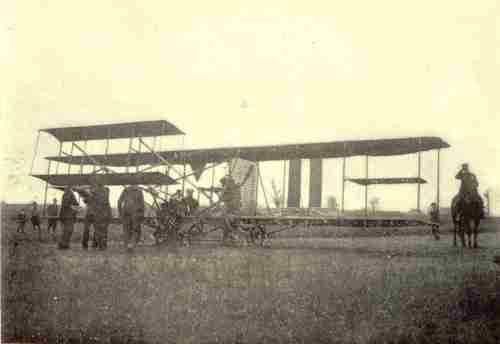
| The Aeronautic Society of New York |
|
IN covered with the specially prepared fabric invented by the doctor himself. Despite the great width of his planes, he uses a single 6-ft. propeller. This propeller was designed and made by Pincus Brauner, and gave a static thrust of 220 lbs. Stanley Y. Beach and C. F. Willard had a big monoplane of an Antoinette-Bleriot type nearly finished. Dr. W. H. Walden had all but completed a new form of apparatus in which two pairs of surfaces of wide spread were placed tandem fashion with the engine, propellers, operator, and passengers, on a frame in between. Mr. Shneider's third machine was all by ready. assisted by his brother, Charles, was making rapid headway with |
 |
| Photo Edwin Levick, N. Y. |
|
The Third Members Machine to Fly The flight of this machine was the more noteworthy because it was the first time that any inventor had been able to construct an apparatus that would successfully use an ordinary stock automobile motor. Dr. Greene used a British-American 26 h. p. engine weighing 320 lbs. Subsequently he installed the Kimball motor, which was half the weight. The machine flew much better then, because it did not need 60 or 70 lbs. of ballast hung on the front control to balance it; and, on the doctor's leaving for Middletown, O., to take up the manufacture of aeroplanes, the apparatus was bought by Mr. Kimball, and taken to Rahway, N. J., where experiments were continued with it in conjunction with F. E. Boland. This chanced to involve Mr. Kimball in at any rate one piece of good luck, for it so happened that it caused him to move his valuable motor away from his laboratory a few days before the fire. Another notable event was the building of the Riggs-Rice dirigible, The American |
|
|